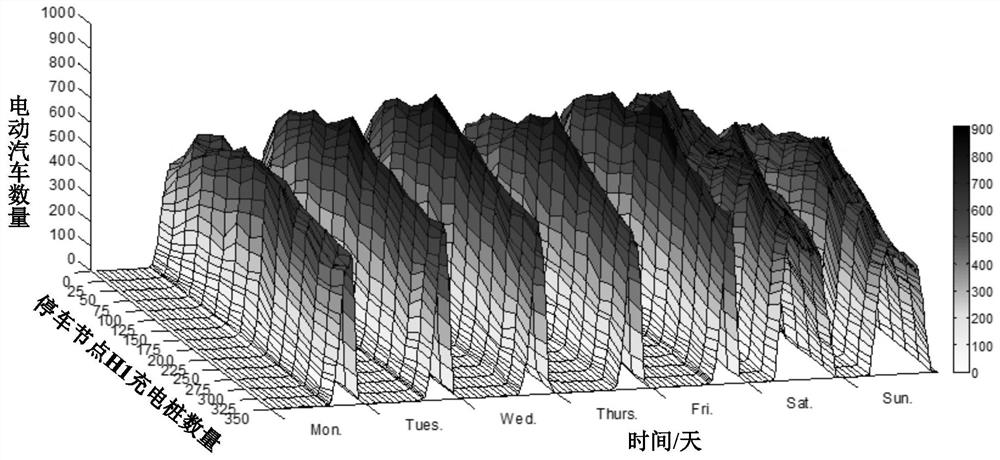An analysis method for electric vehicle travel and charging demand considering charging feedback effect
A technology for electric vehicles and charging requirements, applied in data processing applications, instruments, calculations, etc., can solve the problems of travel demand changes in time and space distribution, without considering the impact of charging facilities, etc.
- Summary
- Abstract
- Description
- Claims
- Application Information
AI Technical Summary
Problems solved by technology
Method used
Image
Examples
specific example
[0117] The simulation is carried out in the destination mode, so the urban traffic network is reasonably simplified and the relevant information of the main parking lots (parking nodes) where users park in the simulated area is given. The specific information is shown in Table 2. There are a total of 4,000 electric vehicles in the simulation area. Referring to the technical parameters of Nissan Leaf, the lithium battery capacity of electric vehicles is C EV = 48kW·h, power consumption E for driving 100km 100 = 15kWh, cruising range X D =160km, charging power q=6kW, average driving speed v=40km / h. It is assumed that the initial state of charge of electric vehicles conforms to the normal distribution of N (0.51, 0.18). The constant c that reflects factors such as weather and road conditions is a random number of (1, 1.5]. The elastic coefficient m 1 = 1.2, fuzzy coefficient m 2 = 2, support factor n 1 =1.05, the time interval of time series interaction simulation dt=15min....
PUM
 Login to View More
Login to View More Abstract
Description
Claims
Application Information
 Login to View More
Login to View More - R&D
- Intellectual Property
- Life Sciences
- Materials
- Tech Scout
- Unparalleled Data Quality
- Higher Quality Content
- 60% Fewer Hallucinations
Browse by: Latest US Patents, China's latest patents, Technical Efficacy Thesaurus, Application Domain, Technology Topic, Popular Technical Reports.
© 2025 PatSnap. All rights reserved.Legal|Privacy policy|Modern Slavery Act Transparency Statement|Sitemap|About US| Contact US: help@patsnap.com



